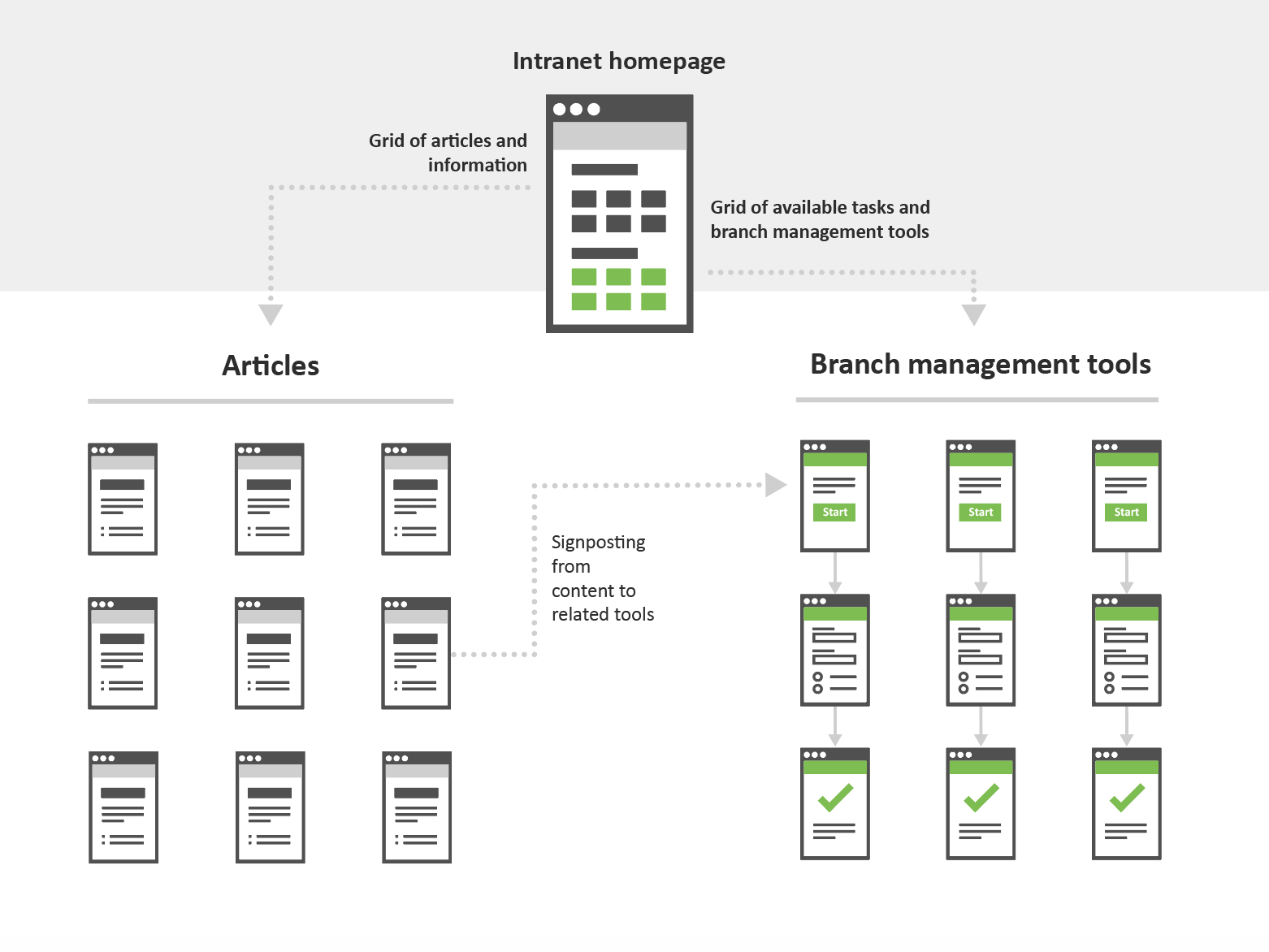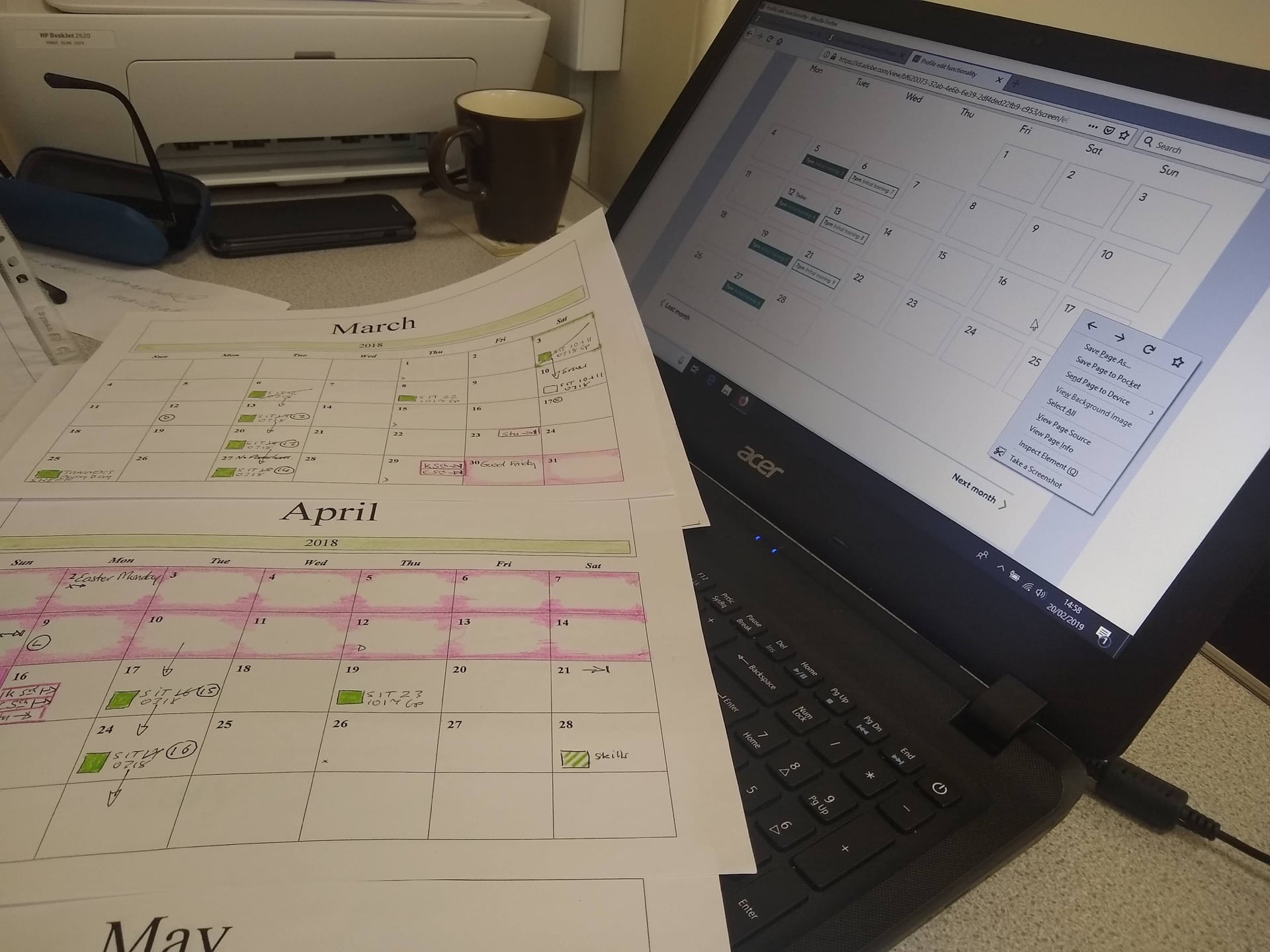We’re designing new management tools to make life easier for the senior volunteers in our branches.
These tools will aid the recruitment and training of new volunteers, moving tasks like scheduling interview slots, updating volunteer contact details and recording attendance online for the first time.
Recently, we asked potential users from three branches across Yorkshire about their roles, any digital tools they already used, and any paper-based processes they followed.
Then, we asked them to complete tasks using an early prototype of these new tools, and kept track of any problems or confusion they encountered.
Although we discovered plenty of issues with the prototype that we can now iterate on and improve, we also discussed several larger issues.
Here are the biggest.
Use the words users use
The names we choose for these new tools will be vital to their success.
At the moment, we’re calling them “branch management tools”, but that name can’t stay. It means different things to different people, and hinders understanding more than it helps.
We experimented with broad, punchy names like “Samaritans People” and “Samaritans Community”, but we’ve had most success with a simple, utilitarian naming scheme of “manage recruitment” and “manage training”.
These terms are already familiar to our volunteers, and use verbs, not just nouns.
When the tools are named in this way, it’s easy for volunteers to find the right one for them, and to understand what it’s likely to do.
This approach is similar to that for naming new government services on GOV.UK.
Whatever the final names, users will probably access these tools by clicking tiles on our new intranet homepage.

Overriding automation when necessary
At the moment, we’re trying out a new, simpler way to become a volunteer in the north of England. Between increased automation and giving applicants a lot more control over the process, there’s much less admin for senior branch volunteers to do.
While volunteers appreciate this change, sometimes it’s necessary to override the default automated process.
For instance, if an applicant reschedules their interview many times in a row, it’s important for branch volunteers to make an educated decision about whether they want to keep offering more interviews to that person.
Equally, an applicant might enter the wrong details on an application form and ask their branch to amend it. At the moment, there is no easy way for branch volunteers to do these kind of tasks.
When we introduce our new branch management tools, we’ll need to make sure that we give senior branch volunteers the ability to override all important parts of the process.
Eliminating pen and paper entirely isn’t realistic
Detailed notes are often made during interviews and training sessions, usually with pen and paper. These notes are valuable evidence used to make important decisions about whether a person is suitable to be a listening volunteer, so it’s important to keep them throughout the recruitment and training process.
Ideally, we would digitise all this and store any notes electronically, but it’s often not appropriate or comfortable to sit typing on a laptop during an interview or training session. Transcribing written notes afterward would be a lot of extra work—exactly what we want to avoid.
This, plus the fact that Samaritans volunteers have widespread differences in digital confidence, means it’s unlikely that we’re going to eliminate written records from recruitment and training, at least not for a long time.
The tools we build should be sensitive to that reality and give features that let notes be digitised where needed, but should not enforce a purely electronic workflow.
“What we do now is good enough”
When we introduce our new branch management tools, we’ll be keeping all of our volunteer data in one place for the first time.
This will let us automate some parts of the process, like reminding volunteers of upcoming training or interviews. It’ll also be possible for volunteers to tell us about a change in their circumstances just once, and have that updated across the organisation.
Recruiting and training new volunteers is a big admin burden, but every Samaritans branch has already invented their own process to deal with that workload.

Usually, that process relies heavily on paper files, binders and spreadsheets, and is heavily customised for the situation of that particular branch. A large metropolitan branch with 100 or more volunteers will need a very different process to a smaller branch with only a dozen.
In a few branches, these paper files are already supplemented with simple software tools.
It’s very possible that senior branch volunteers—the intended users—won’t see these new branch management tools as an improvement over what they already do. The existing process isn’t perfect, but is “good enough”, considering the alternative of major change.
We need to make sure that these new branch management tools:
- Only reduce volunteer workload, never increase it
- Are flexible enough to meet the needs of both small and large branches
These new tools will only see widespread use if we get all both of these things right.
Further reading
- The principles we’re following in designing and building these new tools
- GOV.UK’s guide to naming digital services
If you found this useful, why not share it with someone?